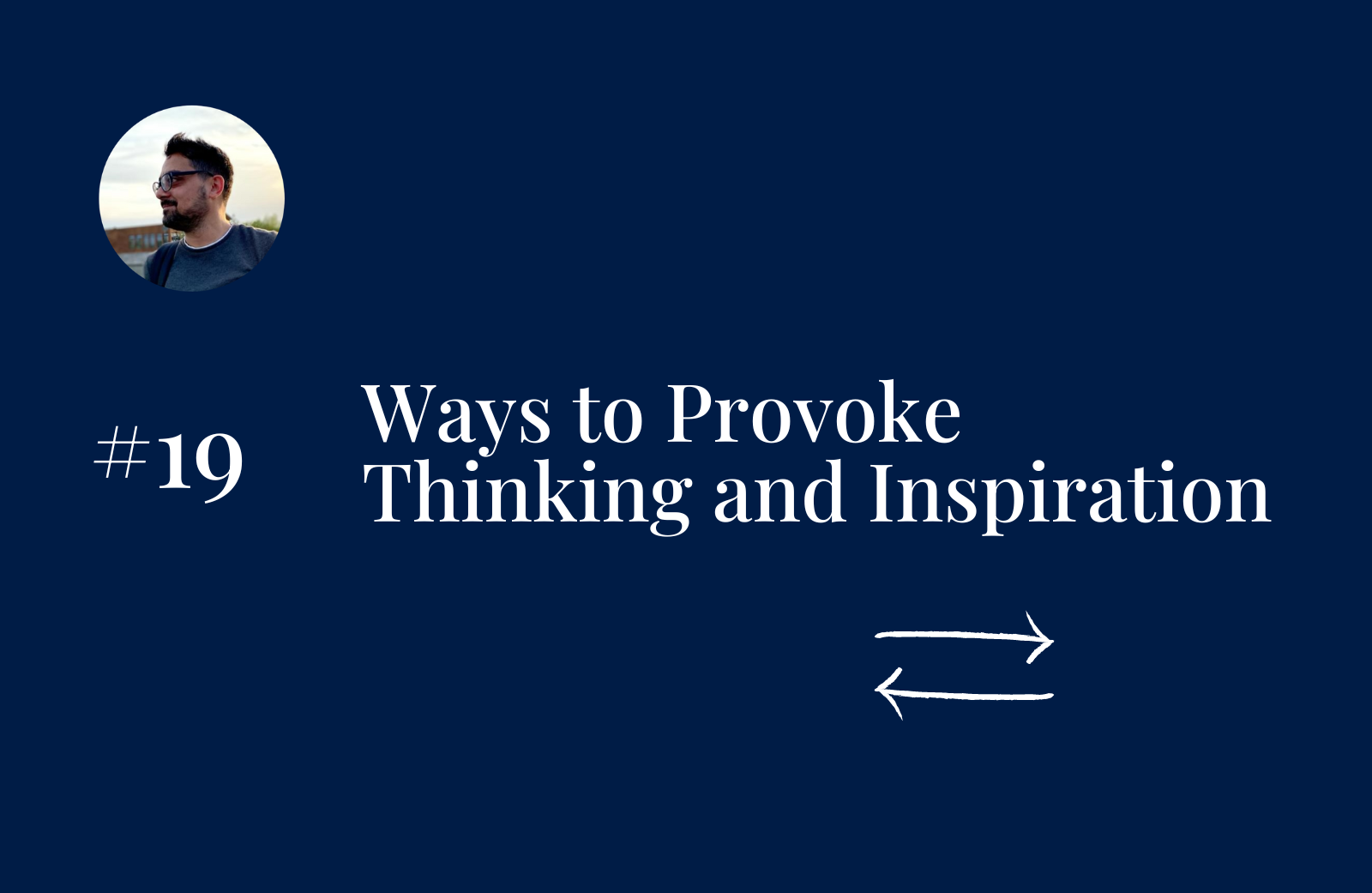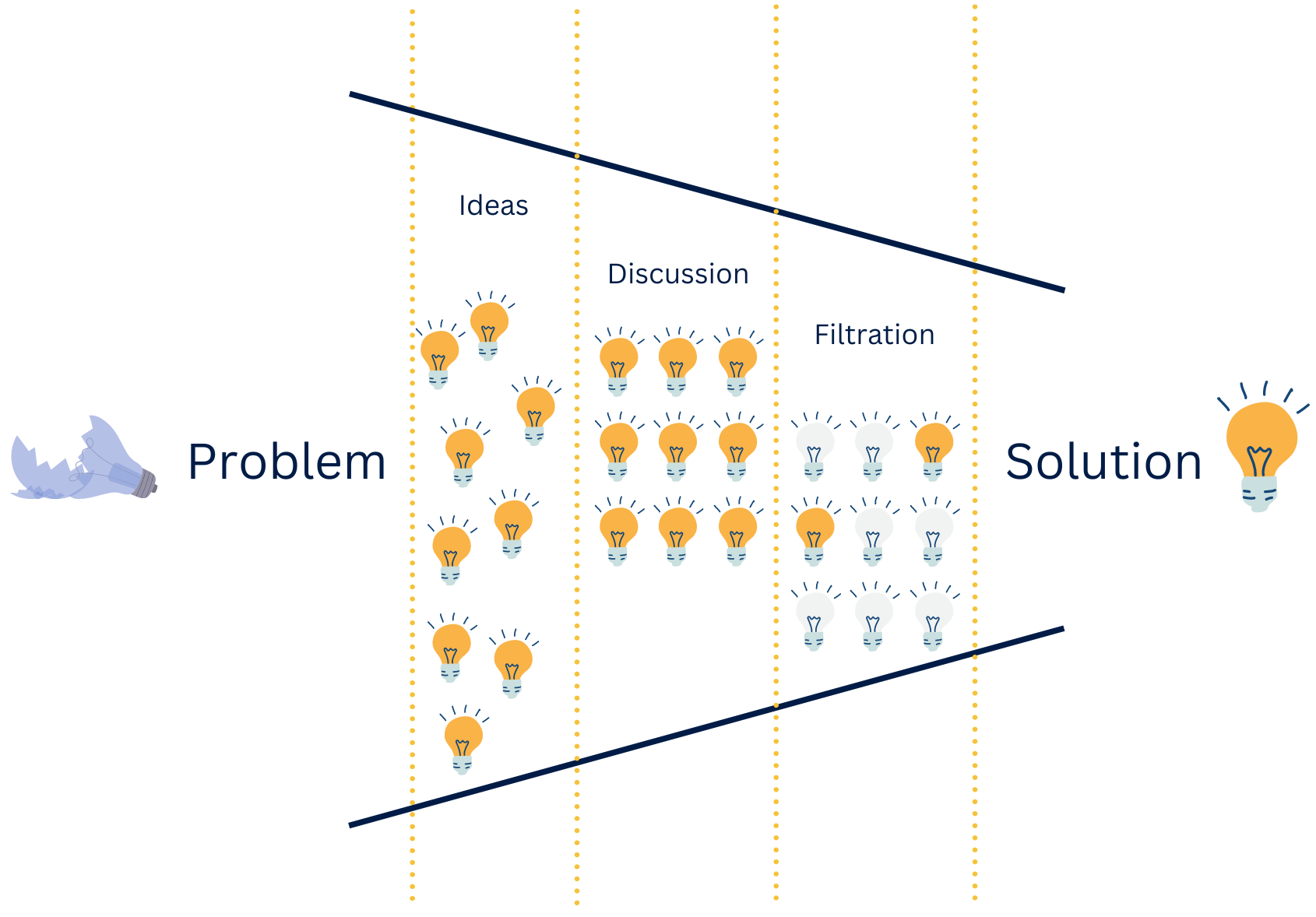
21 Aug Ways to Find a Solution to a Problem
Aug 21, 2024
As I mentioned in my previous article “How to Find a Solution to a Problem”, a solution is a sequence of thoughts which, when applied to a problem, would eliminate or reduce it. However, for a new thought to emerge, we need an external stimulus that contradicts and provokes us.
I am sure you can invent an external provocation yourself, but to ease your job, let’s review a few of them:
- Brainstorming
- Reverse brainstorming
- The power of the good conversation
- Reading, watching and listening
- Engaging in unusual activities
Brainstorming
Brainstorming is a technique that involves generating a large number of ideas to find a solution to a problem.
It can be done individually or in a group. Group sessions have the advantage that each person’s ideas inspire others to come up with more varied solutions.
The key to a successful brainstorming session is to encourage unrestricted thinking, withholding criticism or evaluation until all ideas have been put forth. This process allows for generating out-of-the-box ideas, some of which might lead to interesting solutions to the initial problem.
Let’s walk through the process.
The Setup
Ideally, you need two or more participants. While you can certainly do this alone, involving more people provides a broader range of ideas. You’ll discover through experience that group discussion of a particular idea often generates a remarkable variety of concepts compared to doing that on your own.
Also, bear in mind that different individuals may have different preferences. For instance, I don’t favour large groups. My preference is for multiple, individual 1-on-1 brainstorming sessions. I find this more productive as each conversation involves just me and another person, allowing a calm, focused discussion rather than contending with someone in the group who talks too much without listening.
So, once you’ve decided on the number of participants for your brainstorming session, the next step is ensuring that every participant knows the rules.
Finally, before you start, select a participant who will lead the process.
Presenting The Problem
Before starting the brainstorming session, the leader of the group has to present the problem for which you’re seeking one or more solutions.
Idea Generation
For a fixed period, each participant should write down as many potential solutions as possible without considering whether they’re feasible or not.
Presenting The Ideas
Once this phase is complete, all participants present their ideas for discussion. Remember, during these discussions, you are not allowed to criticise others’ ideas. Think outside the box.
If an idea evolves or new ideas emerge during the discussion, note everything down.

Filtration
Now, you can apply restricted thinking. The final stage involves eliminating impracticable or absurd ideas.
Discuss and refine the list to the smallest number of feasible ideas.
Ideally, you should conclude with one or more solutions to your problem.
Reverse Brainstorming
Imagine you have a problem you’d like to solve, but instead of searching for a solution, we aim to find a hundred ways to make the problem even bigger. Instead of solving it, we will try to break things.
The Problem
Let’s take the following problem:
“How can we improve customer satisfaction?”
and reverse it:
“What could we do to make customer satisfaction even worse?”
The Ideas

Here are a few nice ideas:
- Delayed response to customer inquiries.
- Ignoring customer feedback.
- Inconsistent product quality.
- Complicated user interface.
- The customer service doesn’t respond 24/7 as stated on our website.
- Every time a customer purchases a product, they must email us to complete the order and wait 24 hours for our response.
Again, as with brainstorming which we discussed last time, we don’t apply any limitations when generating ideas. Our ultimate goal is to make the customer’s life as miserable as possible, no matter how.
Filtration
Next, we filter the ideas by removing those unrealistic (i.e., ideas involving aliens).
Reversing The Ideas
The final step is to use the ideas to identify areas where improvements should be made. In this case, ensuring a prompt response to customer inquiries, paying attention to customer feedback, maintaining consistent product quality, and simplifying the user interface.
So, by thinking about what could worsen the situation (reverse brainstorming), you identify what improvements can be made.
The Power of the Good Conversation
This approach is one of my favourites. Think of a knowledgeable friend who would enjoy having a nice cup of tea or coffee with you and invite them out.
Sit down, relax, and share with them the thing you’d like to talk about. I can tell you this: over the years if you surround yourself with people like this – specialists in their field – who are intelligent, polite and enjoy relaxed conversations, you’ll find that debating and discussing a variety of topics with them is a very enriching activity.
You will discover that such conversations can be even more potent than brainstorming, reverse brainstorming, or any other activity I mention below.
Reading, Watching and Listening
There isn’t much to say here. Reading books and articles, watching documentaries, and listening to podcasts will metaphorically create new worlds in your head that will interact with your thoughts. As a result, you will be provoked, and new thoughts will emerge.

Please be aware that watching the screen of your phone and browsing social media will not yield the same effect! The result is likely to be quite the opposite, and the reason is simple. The content in so-called social networks – despite there being nothing social about them – more often than not, follows the same pattern. Rather than enriching you, it steals your attention and squanders your time with pointless photos, videos, and self-proclaimed gurus.
Engaging in Unusual Activities
Engaging in activities that are unusual for us may provoke new thoughts. This could include reading a book of a genre we typically don’t explore, or even travelling to a place we haven’t been before.

Engaging in unusual activities can go a little more extreme (also known as “Not-Doing” in some mystical teachings). Let me give you a few examples:
- If you wear your watch on your left hand, a small unusual activity would be to start wearing it on your right hand.
- Another example is to change the direction of fastening the belt on your trousers.
- Consider changing the colour of your hair.
- Try wearing two slightly different shoes at the same time.
I know…here I start to sound a bit crazy, however, I can assure you that it works.
